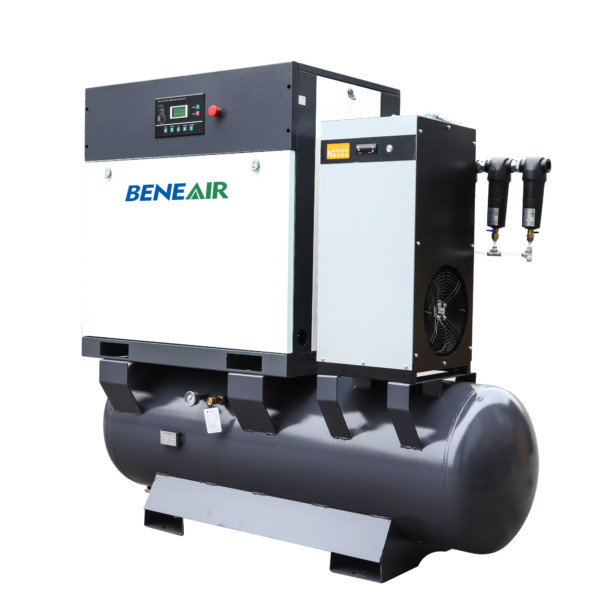Contents
Pressure switches are used in a variety of air compressors. A pressure switch is a vital component of air compressors. Due to this pressure switch, everything from the small compressors to the largest rotary screw compressor detects the need to stop and start.
An air compressor provides compressed air or gas for quick usage. An engine like an AC motor that produces compressive force, a pressure valve, a reservoir or pumping stations, inflow and output pipework, and regulators are the essential components of such an air compressor. An essential one is the air compressor pressure switch.
Components of Air Compressor Pressure Switch
Components of Air Compressor Pressure Switch
When you need to go on a daily task, the air compressor pressure switch will assist your machines in maintaining the correct system pressure. So when the tank’s air pressure drops and additional gas is required, the air compressor pressure switch will activate your compressors. The main components of an air compressor pressure switch are:
- ON/OFF Switch
The switch’s ON/OFF function activates and stops the motor and the pressure pump. The purpose of having an adjustable switching device is to make sure that the air compressor works under permissible levels while maintaining the practical pressure level.
- Terminals and Connections
The pressure switch starts or stops the power supply indicating when the air compressor should start. The pressure switch is linked to the incoming and outgoing wire through the terminals. While the switch contacts are two main points constructed with metal, when detached and attached, they can establish or break the current flow.
- Spring for Adjustment
Springs can be used to regulate the air compressor’s cut-in and cut-out levels. Once you compress the spring, the flap will exert more significant pressure right before the spring can move the connectors separated from each other. The spring will require less force for sliding if you relax it.
- Diaphragm
The diaphragm is a rubber gasket covering that moves up and down in response to the pressure force inside the compressor. Due to the diaphragm movement, the contacts either attach or detach.
- Pressure Unloading Valve
The pressure switch relief valve is used to alleviate the pressure built up between the compressor and the safety valve. It is located at the bottom of the pressure switch, from which a nylon or metal tubing connects it to the pressure regulator. Once the contacts detach, the valve opens. It is designed for safety purposes so the pressure may not accumulate, causing harm to anyone.

Working of Air Compressor Pressure Switch
Working of Air Compressor Pressure Switch
When we put pressure on the switch, it activates a sensor. A diaphragm is the most ubiquitous element, which deforms or compresses when subjected to compressed air. These pressure switches provide for a specific range of output pressure distribution.
As much as the device uses compressed air, the pressure switch on the air compressor will continue the bouncing. When there is a problem or no power supply from outside, the cycle will stop. In the pressure switch and adjoining casing, the leakage might create severe difficulties and interrupt all activity.
- Cut-in Pressure Setting
If the cut-in pressure is within the device’s limits, you can adjust it on any switch. However, some regulators have a customizable range, and others have a set differential, which is generally between 0.8 and 1 bar.
- Cut-out Pressure Setting
The reverse pressure, also known as the cut-out pressure of the compression chamber, will ultimately accumulate enough to affect the diaphragm curve. The compressor pressure switch will shift as a result of the bending.
The Setting of Air Compressor Pressure Switch
The Setting of Air Compressor Pressure Switch
The air compressor pressure switch is simple to set up. All you have to do is set the cut-out and cut-in pressure ranges. Pressure setting can be modified simply with a defined gap, or both pressure setting and differential can be modified.
The spring is compressed using a large screw to make those changes. The spring is pressed more as the screw is turned clockwise. To put it more simply, we can just increase the pressure setting. When the spring is decompressed, it becomes simpler to rotate and activate with much less effort from the diaphragm.
What to do When the Air Compressor Pressure Switch Leaks?
What to do When the Air Compressor Pressure Switch Leaks?
Due to the constant usage, the most common issue found in the air compressor pressure switch is its leakage. You can detect the leakage by checking out where the air is leaking from. If you find a leak, shut off the compressor immediately.
- The diaphragm may be torn down or pierced if the air is constantly seeping from the switch. You can easily change the diaphragm and stop the leakage with a few adjustments. However, most switches are not meant to be disassembled, and new components may be difficult to come by. It’s considerably easier to repair a leaking switch in this situation.
- The unloader valve is a tiny valve that watches and reacts to the motion of your pressure switch. When the compressor’s engine goes down, it initiates and opens, producing the characteristic screech heard in every efficiently operating air compressor.
- When this screech lasts over these few moments, or you start to feel a constant flow of pressurized gas only at the base of the valve, you know that it is a leakage. These unloaders can be cleaned, but they need a replacement if they have a large crack or displacement.
Replacement of the Air Pressure Compressor Switch
Replacement of the Air Pressure Compressor Switch
If you do not know how to change the air compressor switch, seek a professional’s help. Replacing the switch is usually a simple task in most compressors.
First of all, Switch off the compressor to avoid any harm. Then release the gas in the tank by the opening valve at the base. You must find the unloader valve and disconnect the line that leads to it. Pressure regulator and compression maintenance should all be removed from the pressure switch for which you will need a wrench or pliers.
Grab the cable with pliers to remove it. Now remove the old switch by pulling it up. All components should be lubricated. Rotate on and tighten the new switch to insert it. In the end, reattach all elements and piping pieces.






Leave A Comment